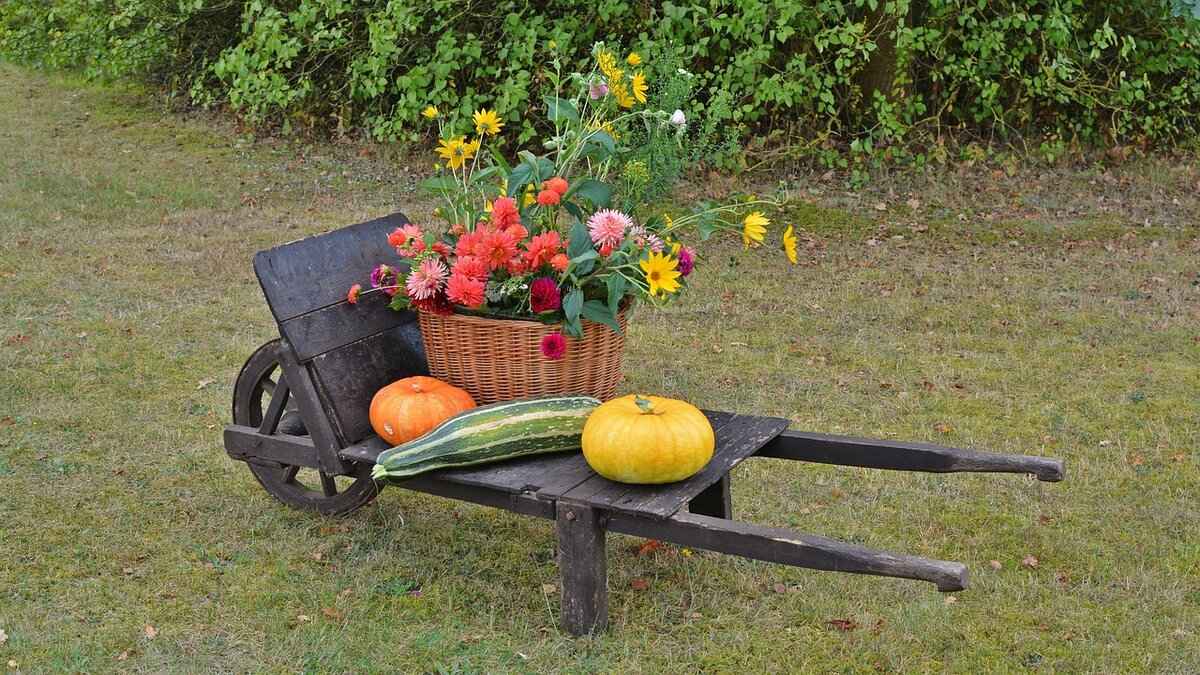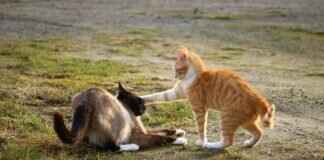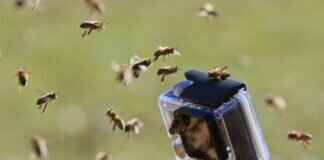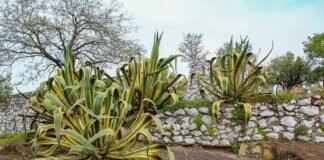This article explores the rich traditions surrounding Mooncake Festivals in Asia, highlighting the best places to savor authentic mooncakes and the cultural significance behind these delightful treats.
The Mooncake Festival, also known as the Mid-Autumn Festival, is a significant cultural celebration in Asia. It is a time for family reunions, moon-gazing, and sharing delicious mooncakes. Traditionally held on the 15th day of the eighth lunar month, this festival celebrates the harvest and the full moon, symbolizing unity and completeness.
Mooncakes hold deep cultural significance, representing unity, family, and the harvest season. They are an essential part of the Mooncake Festival celebrations across various Asian cultures, serving as a medium to express love and appreciation among family members.
The origins of mooncakes date back centuries, intertwined with legends and folklore. One of the most famous stories is that of the Moon Goddess, Chang’e, whose tale adds depth to the cultural importance of these pastries. Mooncakes have historically symbolized the end of the harvest and the reunion of families.
Many legends, such as the tale of the rebellion against Mongol rule, highlight the role of mooncakes in conveying secret messages and fostering unity among the Chinese people. This historical context enriches the festival’s meaning and importance.
Today, mooncakes come in diverse flavors and styles, reflecting modern culinary trends while still honoring traditional recipes. From classic lotus seed paste to innovative flavors like matcha and chocolate, the evolution of mooncakes showcases the creativity of contemporary chefs.
Different regions in Asia have their unique takes on mooncakes. For example:
- Hong Kong: Known for its traditional baked mooncakes with rich fillings.
- Singapore: Famous for snowskin mooncakes that are soft and often filled with unconventional flavors.
- Taiwan: Offers a variety of flavors, including fruit-based and even ice cream mooncakes.
Asia boasts countless places to sample exquisite mooncakes. Some regions are renowned for their unique flavors and high-quality ingredients that elevate the festive experience. Cities like Hong Kong, Singapore, and Taipei are celebrated for their vibrant mooncake offerings.
In Hong Kong, renowned bakeries like Maxim’s and Kee Wah Bakery offer traditional and innovative mooncake varieties. Singapore is home to famous hotels like Raffles and Marina Bay Sands, known for their exquisite mooncake selections. Meanwhile, Taipei features unique flavors at local bakeries and upscale restaurants.
Exploring the diverse flavors of mooncakes can enhance your festival experience. Some must-try flavors include:
- Lotus Seed Paste: A classic favorite.
- Red Bean Paste: A sweet and traditional choice.
- Durian: For the adventurous, this strong-flavored fruit is a unique twist.
- Chocolate: A modern interpretation that appeals to younger generations.
Selecting the perfect mooncake can be daunting given the variety available. Understanding the different types and their ingredients is crucial for making an informed choice.
Mooncakes can be categorized into several types, including:
- Baked Mooncakes: Traditional, with a rich, dense filling.
- Snowskin Mooncakes: Soft and often chilled, these are popular in warmer climates.
- Teochew Mooncakes: Flaky and savory, with a unique texture.
When choosing mooncakes, consider the quality of ingredients, such as natural lotus seed paste or premium nuts. These factors greatly influence the taste and overall experience of the mooncake.
Celebrating the Mooncake Festival involves various traditions, including family gatherings, lantern displays, and moon-gazing. These activities contribute to the festive atmosphere and strengthen family bonds.
Activities such as making lanterns, performing dragon dances, and participating in moon-viewing parties are integral to the festival. They enhance the communal spirit and cultural appreciation among participants.
Many cities host contemporary events like mooncake fairs and cultural performances, blending traditional customs with modern entertainment. These events attract a diverse audience, ensuring the festival remains relevant and engaging for future generations.
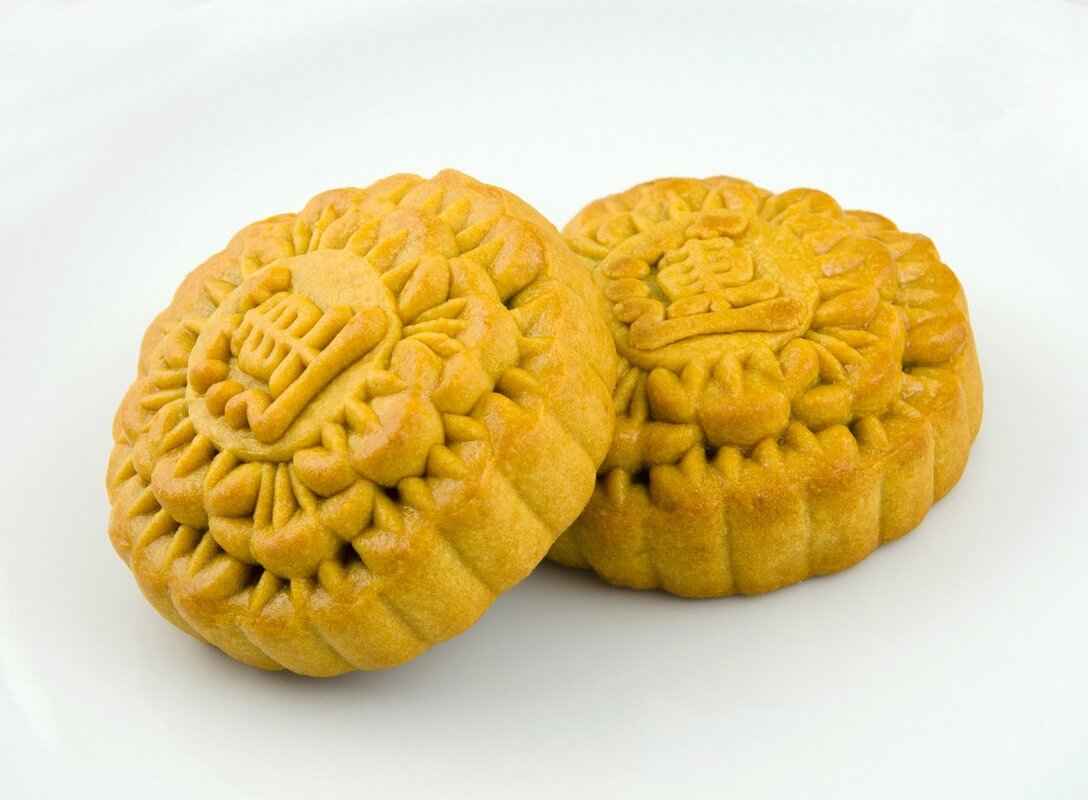
What is the Mooncake Festival?
The Mooncake Festival, also known as the Mid-Autumn Festival, is a cherished cultural celebration that resonates deeply across various Asian communities. This festival typically occurs on the 15th day of the eighth lunar month, coinciding with the full moon, symbolizing reunion and harmony.
During this vibrant festival, families come together to honor their ancestors and celebrate the harvest season. The act of moon-gazing is central to the festivities, as people admire the luminous moon, which is believed to be at its brightest and roundest during this time. This moment of reflection fosters a sense of unity and appreciation for family bonds.
One of the most iconic elements of the Mooncake Festival is the sharing of mooncakes. These round pastries, often filled with sweet or savory fillings, symbolize completeness and togetherness. Traditionally, they are made with ingredients such as lotus seed paste, red bean paste, or mixed nuts, and are often enjoyed with tea.
- Family Reunions: The festival encourages families to gather, share stories, and create lasting memories, reinforcing the importance of familial connections.
- Cultural Performances: Various cultural activities, such as lion dances and lantern displays, are organized to celebrate this festive occasion, showcasing the rich heritage of the communities.
- Lantern Festivals: Children and adults alike participate in lantern parades, lighting up the night and adding a magical touch to the festivities.
In addition to traditional practices, the Mooncake Festival has evolved over the years. Modern interpretations of mooncakes now include innovative flavors like durian and chocolate, appealing to younger generations and food enthusiasts. Bakeries and restaurants often compete to create unique and visually stunning mooncakes, making them a popular gift during the festival.
Furthermore, the festival serves as a time for reflection and gratitude, as people express their appreciation for the bountiful harvest and the blessings in their lives. The full moon is seen as a symbol of prosperity and peace, inspiring hope for the future.
Overall, the Mooncake Festival is not just about the mooncakes themselves; it embodies a rich tapestry of traditions, values, and cultural significance. It is a time for families to come together, honor their heritage, and celebrate the joys of life under the radiant glow of the moon.
As the festival continues to grow in popularity, both in Asia and internationally, it remains a beautiful reminder of the importance of community, tradition, and the simple joys of sharing a meal with loved ones.
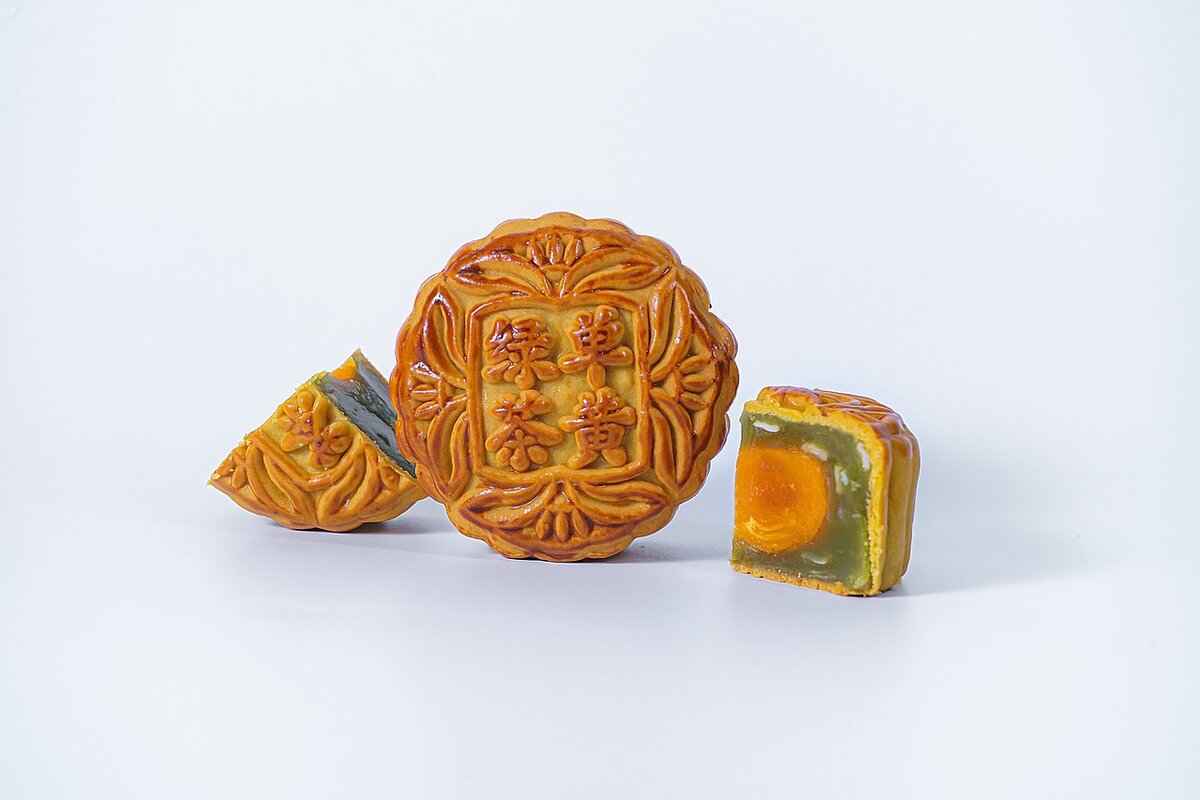
Why Are Mooncakes Important?
The Mooncake Festival, also known as the Mid-Autumn Festival, is a time of joy and reflection, deeply rooted in various Asian cultures. One of the most significant symbols of this festival is the mooncake, a delightful pastry that embodies the essence of unity, family, and the harvest season. But why are mooncakes so important? Let’s delve into their cultural significance and the traditions they represent.
Mooncakes hold a special place in the hearts of many during the Mooncake Festival. These round pastries symbolize completeness and reunion, reflecting the full moon that graces the night sky during this time. Families gather to share mooncakes, reinforcing the bonds of love and togetherness.
Furthermore, mooncakes are traditionally filled with lotus seed paste, red bean paste, or mixed nuts, each ingredient representing different virtues and blessings. For instance, lotus seeds symbolize purity, while nuts signify prosperity. This rich symbolism enhances the experience of sharing mooncakes, as each bite is steeped in cultural meaning.
The history of mooncakes dates back centuries, and their origins are intertwined with legends that add depth to their cultural importance. One of the most famous tales is that of Chang’e, the Moon Goddess, who is said to have consumed an elixir of immortality and floated to the moon. This myth not only elevates the status of mooncakes but also connects them to the celestial themes of the festival.
Additionally, during the Mongol rule in China, mooncakes played a pivotal role in the rebellion against the oppressors. They were used to convey secret messages, with the phrase “Eat the mooncake” serving as a signal to rise against the ruling class. This historical context emphasizes the mooncake’s role in fostering unity among the people.
In today’s culinary landscape, mooncakes have evolved significantly. While traditional flavors remain popular, modern interpretations have emerged, introducing innovative fillings such as durian, chocolate, and even matcha. This evolution reflects changing tastes and the influence of globalization, making mooncakes appealing to a broader audience.
Some bakeries now offer snowskin mooncakes, which are made with a glutinous rice flour skin, providing a unique texture and a refreshing alternative to the baked variety. This adaptation shows how tradition can coexist with modernity, allowing for creativity while honoring the past.
Across Asia, mooncakes vary significantly in terms of flavors, ingredients, and preparation methods. In Hong Kong, for instance, mooncakes are often characterized by their flaky pastry and rich fillings, while in Taiwan, the focus may be on lighter, more delicate versions. Each region’s unique take on mooncakes reflects its local culinary traditions and cultural influences.
- Hong Kong: Famous for its traditional baked mooncakes.
- Singapore: Known for innovative flavors and artistic designs.
- Taiwan: Offers snowskin mooncakes with a fresh twist.
These regional distinctions not only enhance the festival experience but also allow for a rich tapestry of flavors and traditions to be celebrated across different cultures.
Celebrating the Mooncake Festival involves various traditions, including family gatherings, lantern displays, and moon-gazing. These activities create a festive atmosphere that fosters community spirit and cultural appreciation.
As you partake in the festivities, remember that mooncakes are more than just a delicious treat; they are a representation of history, culture, and the importance of family. Whether you’re enjoying a classic lotus seed mooncake or trying a modern flavor, you are participating in a time-honored tradition that continues to bring people together.
Historical Significance of Mooncakes
The extends far beyond their delicious taste and intricate designs. These delightful pastries are deeply embedded in the cultural fabric of Asia, particularly during the Mid-Autumn Festival. Their origins can be traced back over a thousand years, with tales and legends that enrich their meaning and significance.
One of the most famous legends associated with mooncakes is the story of the Moon Goddess, Chang’e. According to this ancient tale, Chang’e consumed an elixir of immortality and ascended to the moon, leaving her husband, Hou Yi, behind. This poignant story symbolizes longing and reunion, themes that resonate during the Mooncake Festival when families gather to celebrate and share mooncakes under the full moon.
Furthermore, mooncakes are often linked to the Han Chinese rebellion against Mongol rule in the 14th century. It is said that mooncakes were used as a means of communication among rebels, with secret messages hidden inside. This clever tactic not only helped to organize the uprising but also solidified the mooncake’s role as a symbol of unity and resistance against oppression.
As the centuries progressed, the significance of mooncakes evolved. They became a representation of harvest abundance and familial ties, reflecting the agrarian roots of the festival. Mooncakes are traditionally round, symbolizing completeness and unity, which aligns with the festival’s emphasis on family reunions and togetherness. Each bite of a mooncake is a reminder of the importance of family bonds and the joy of sharing time with loved ones.
In contemporary society, mooncakes have adapted to modern tastes while still honoring their traditional roots. Today, you can find a variety of mooncake flavors and styles, from classic lotus seed paste to innovative options like green tea and chocolate. This evolution reflects the changing culinary landscape and the desire of bakers to cater to diverse palates, ensuring that mooncakes remain relevant in today’s world.
Moreover, the craftsmanship involved in making mooncakes has become an art form in itself. Many bakeries offer beautifully crafted mooncakes, often adorned with intricate designs and symbols. This attention to detail not only enhances their visual appeal but also signifies the respect and reverence for the traditions they represent.
In summary, the historical significance of mooncakes is a rich tapestry woven from legends, cultural practices, and familial values. They are more than just a seasonal delicacy; they embody a deep cultural heritage that continues to thrive in the modern world. Whether enjoyed in their traditional form or as a modern twist, mooncakes remain a cherished part of the Mid-Autumn Festival, reminding us of the importance of unity, family, and the stories that shape our identities.
Legends Surrounding Mooncakes
The Mooncake Festival is steeped in rich traditions and captivating legends, each adding layers of meaning to the beloved mooncake. Among these tales, one of the most notable is the story of the rebellion against Mongol rule, which illustrates how mooncakes served as a medium for secret communication and unity among the Chinese people.
During the Yuan Dynasty, the Mongols ruled over China, creating a climate of oppression and unrest. In response, the Han Chinese devised a clever plan to incite a rebellion. They baked mooncakes, embedding messages within them to organize a revolt against their oppressors. The message conveyed was simple yet powerful: “Uprise on the night of the Mid-Autumn Festival.” This ingenious method of communication not only showcased the resourcefulness of the Chinese people but also highlighted the mooncake’s role as a symbol of resistance and solidarity.
This legend emphasizes the significance of mooncakes beyond their delicious taste. They represent the spirit of unity and the resilience of a culture facing adversity. The act of sharing mooncakes during the festival serves as a reminder of the collective strength that can emerge from challenging times. Families gather to enjoy these treats, reflecting on their shared heritage and the importance of standing together in the face of hardship.
Moreover, the mooncake has evolved into a symbol of reunion, particularly during the Mid-Autumn Festival. Families who may be separated by distance often look forward to this time of year to come together, share mooncakes, and celebrate their bonds. The act of giving mooncakes to friends and family is a gesture of goodwill, reinforcing connections and fostering a sense of community.
The legends surrounding mooncakes are not limited to tales of rebellion. They also include stories of the Moon Goddess, Chang’e, who is said to reside on the moon, forever separated from her beloved husband, Hou Yi. This poignant narrative adds an emotional depth to the festival, as families gather to admire the full moon and reflect on themes of love, sacrifice, and longing.
As we celebrate the Mooncake Festival today, these legends continue to resonate, reminding us of the importance of unity and the rich cultural heritage that mooncakes embody. The stories inspire modern interpretations of mooncakes, with new flavors and styles emerging that pay homage to both tradition and innovation.
In conclusion, the legends surrounding mooncakes serve as a powerful reminder of their significance in Chinese culture. They encapsulate the essence of unity, resilience, and the enduring spirit of the people. As we indulge in these delectable treats during the festival, we honor the stories of the past while creating new memories for the future.
Modern Interpretations of Mooncakes
have transformed the traditional pastry into a culinary canvas, allowing chefs and bakers to experiment with flavors and presentations that resonate with contemporary tastes. This evolution reflects not only a shift in consumer preferences but also a desire to maintain cultural significance while embracing innovation.
Historically, mooncakes were made with simple fillings like lotus seed paste or red bean paste, encased in a thick, baked crust. However, the modern palate craves variety, leading to an explosion of flavors that range from the classic to the avant-garde. Today, you can find mooncakes filled with chocolate ganache, green tea, and even exotic fruits like durian or mango. This diversity not only caters to a wider audience but also invites experimentation, encouraging consumers to explore different flavor combinations.
In addition to flavor variations, the presentation of mooncakes has also evolved. Traditional mooncakes are typically round, symbolizing completeness and unity. However, modern interpretations often showcase unique shapes and designs, such as mini mooncakes, snowskin mooncakes, and even mochi-style mooncakes. These creative adaptations not only appeal to aesthetic sensibilities but also reflect a broader trend towards personalization in food.
Moreover, the use of high-quality ingredients has become a hallmark of modern mooncake production. Artisanal bakers prioritize natural ingredients and locally sourced produce, ensuring that each mooncake is not only delicious but also wholesome. This commitment to quality enhances the overall experience and aligns with the growing consumer demand for transparency in food sourcing.
Another significant aspect of modern mooncakes is their role in gifting. Traditionally, mooncakes were presented as gifts to express goodwill and familial love during the Mooncake Festival. Today, they have become luxury items, often beautifully packaged and marketed as premium gifts. High-end brands create elaborate gift sets, sometimes including limited-edition flavors or collaborations with renowned chefs, making them highly sought after during the festive season.
Health-conscious consumers are also influencing the evolution of mooncakes. With a growing awareness of dietary preferences and restrictions, many bakers are now offering vegan, gluten-free, and low-sugar options. This inclusivity allows more people to partake in the Mooncake Festival, ensuring that everyone can enjoy these delightful treats regardless of their dietary needs.
As the Mooncake Festival continues to be celebrated across Asia and beyond, the modern interpretations of mooncakes signify a beautiful blend of tradition and innovation. They not only celebrate the rich cultural heritage associated with the festival but also reflect the dynamic nature of culinary arts in the modern world. This evolution showcases how deeply food is intertwined with culture and identity, making mooncakes a symbol of both history and contemporary life.
In summary, the modern interpretations of mooncakes highlight the adaptability of this beloved pastry. By embracing new flavors, innovative designs, and high-quality ingredients, mooncakes continue to captivate the hearts and taste buds of people around the world, ensuring their place in both traditional celebrations and contemporary culinary experiences.
Regional Variations of Mooncakes
The Mid-Autumn Festival is a time of celebration across Asia, and at the heart of this festival are mooncakes. These delightful pastries are not only delicious but also steeped in cultural significance. Different regions in Asia have their unique takes on mooncakes, with variations in flavors, ingredients, and preparation methods that reflect local culinary traditions. In this section, we will explore these regional variations and what makes each one special.
Mooncakes can be broadly categorized into several types, each with distinctive characteristics:
- Baked Mooncakes: The most traditional form, these mooncakes have a golden-brown crust and are often filled with lotus seed paste or red bean paste.
- Snowskin Mooncakes: Originating from Hong Kong, these mooncakes feature a soft, chewy exterior made from glutinous rice flour, often filled with fruity or creamy fillings.
- Teochew Mooncakes: These mooncakes have a flaky crust and are typically filled with a mix of salted egg yolks and sweet mung bean paste.
Regional ingredients play a crucial role in shaping the flavors of mooncakes. For instance:
- Hong Kong: Known for its innovative flavors, you can find mooncakes filled with durian, chocolate, and green tea.
- Singapore: Offers a fusion of traditional and modern, with flavors like mango and lychee becoming increasingly popular.
- Taiwan: Famous for its pineapple cakes, Taiwanese mooncakes often incorporate this tropical fruit into their fillings.
The uniqueness of mooncakes from different regions can be attributed to local culinary traditions and the cultural significance attached to them. For example:
- China: In various provinces, mooncakes are often made with unique local ingredients, such as black sesame in the north or sweetened jujube in the south.
- Malaysia: Here, mooncakes may feature pandan flavoring, reflecting the region’s love for this aromatic leaf.
- Vietnam: Known as “Bánh Trung Thu,” these mooncakes often have a thicker crust and are filled with lotus seeds and coconut.
Preparation methods also vary significantly, showcasing the diversity of culinary practices:
- Traditional Baking: In many Chinese households, mooncakes are baked in traditional ovens, imparting a distinct flavor and texture.
- Chilling: In regions where snowskin mooncakes are popular, the dough is often chilled before serving, providing a refreshing contrast to the rich fillings.
- Handmade Techniques: In some areas, mooncakes are still made by hand, with families passing down recipes and techniques through generations.
As you can see, the regional variations of mooncakes are a testament to the rich tapestry of culinary traditions in Asia. Each mooncake tells a story of its origin, influenced by local ingredients, preparation methods, and cultural significance. Whether you prefer the classic baked variety or the modern snowskin version, exploring these regional specialties can enhance your appreciation of the Mooncake Festival.
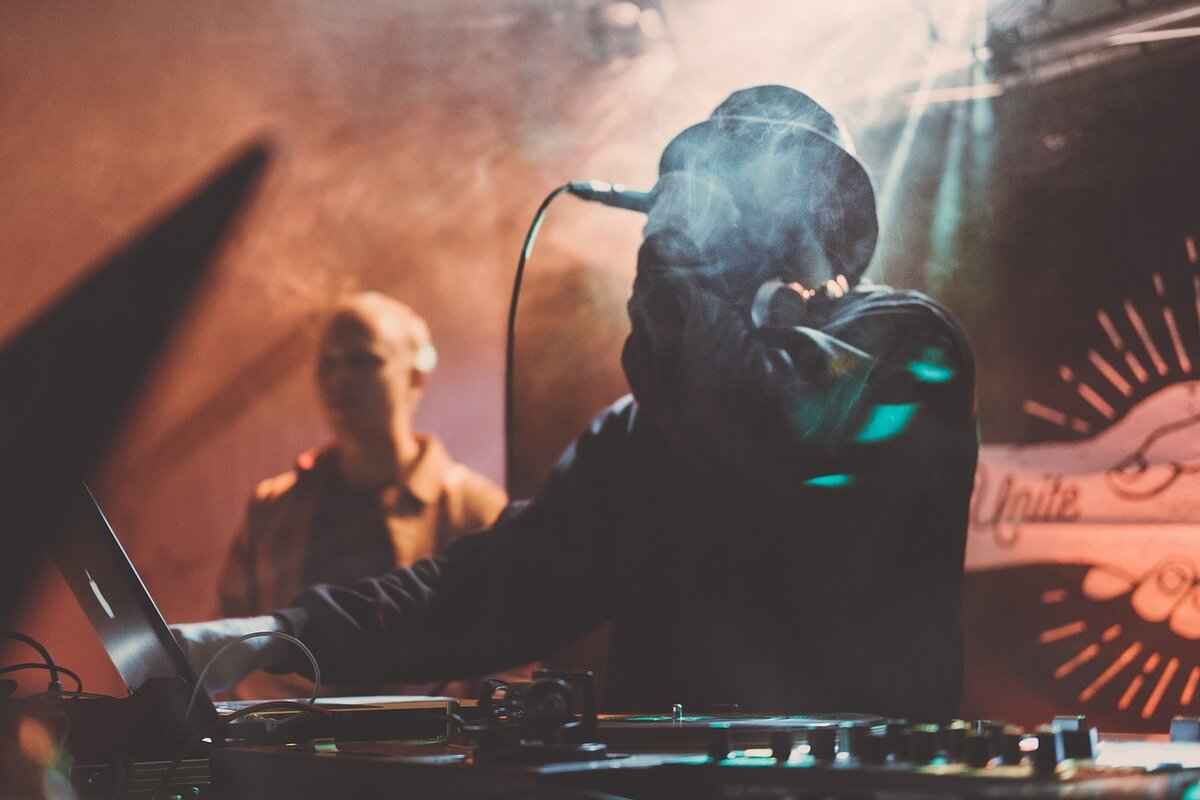
Where to Try the Best Mooncakes in Asia?
The Mooncake Festival, a vibrant celebration of culture and tradition, brings people together to enjoy the beauty of the full moon while indulging in delicious mooncakes. As the festival approaches, many enthusiasts wonder, where can you find the best mooncakes in Asia? This article delves into the top destinations and unique flavors that make mooncake tasting a delightful experience.
Asia is a treasure trove of mooncake varieties, each region offering its own twist on this traditional delicacy. From Hong Kong’s luxurious bakeries to Singapore’s bustling street markets, here are some of the best places to sample exquisite mooncakes:
- Hong Kong: Renowned for its high-end mooncake offerings, Hong Kong features famous brands like Maxim’s Cakes and Tai Cheong Bakery. Here, you can indulge in classic flavors such as lotus seed paste and salted egg yolk, as well as innovative creations like green tea and durian.
- Singapore: A melting pot of cultures, Singapore offers a diverse range of mooncake flavors. Visit Raffles Hotel for their signature mooncakes, which include unique fillings like mango and coconut. Additionally, local bakeries often experiment with modern twists, making this city a must-visit for mooncake enthusiasts.
- Taipei: In Taiwan’s capital, mooncake lovers can explore the bustling Shilin Night Market, where vendors sell both traditional and contemporary mooncakes. Don’t miss out on pineapple cake mooncakes, which blend local flavors with the classic mooncake structure.
- Shanghai: Known for its rich culinary heritage, Shanghai offers mooncakes filled with red bean paste and mixed nuts. Visit Yuyuan Garden for a taste of authentic local flavors amidst historical surroundings.
Each region’s mooncakes are crafted with high-quality ingredients and reflect local tastes. For instance, Hong Kong’s mooncakes are often characterized by their flaky crust and rich fillings, while Singapore’s variations showcase a fusion of flavors that cater to diverse palates. The preparation methods also vary, with some regions favoring the traditional baked style, while others prefer the modern snowskin mooncakes.
The flavor profile of mooncakes is vast and exciting. Here are some must-try flavors that can elevate your festival experience:
- Lotus Seed Paste: The classic choice, often paired with salted egg yolk for a savory contrast.
- Red Bean Paste: A sweet, traditional filling that is popular across many regions.
- Durian: For the adventurous, this strong-flavored fruit offers a unique twist that is adored by many in Southeast Asia.
- Chocolate: A modern favorite, chocolate mooncakes appeal to younger generations and those with a sweet tooth.
With so many options available, selecting the perfect mooncake can be overwhelming. Consider the following tips:
- Know Your Preferences: Decide whether you prefer traditional fillings or are open to trying innovative flavors.
- Quality of Ingredients: Look for mooncakes made with premium ingredients, as they greatly enhance flavor and texture.
- Presentation: Many mooncakes come beautifully packaged, making them perfect gifts for family and friends.
As the Mooncake Festival approaches, exploring these top destinations and flavors will surely enrich your experience. Whether you are indulging in traditional mooncakes or trying modern interpretations, the joy of sharing these delightful treats with loved ones is what truly embodies the spirit of the festival.
Top Destinations for Mooncake Lovers
The Mid-Autumn Festival is a time of celebration, family reunions, and, most importantly, the sharing of mooncakes. Among the many cities that embrace this tradition, Hong Kong, Singapore, and Taipei stand out for their exceptional mooncake offerings. These vibrant urban centers are not only steeped in rich cultural heritage but also showcase a remarkable evolution in mooncake flavors that cater to both traditionalists and adventurous foodies alike.
In Hong Kong, mooncakes are a culinary art form. Traditional flavors like lotus seed paste and red bean are crafted with precision, while innovative variations such as green tea and chocolate lava have emerged. Renowned bakeries like Maxim’s and Tai Cheong offer exquisite selections that reflect both heritage and modern tastes. The city’s vibrant food scene ensures that mooncakes are not just a seasonal treat but a year-round indulgence.
Moving to Singapore, the mooncake festival is a celebration of multiculturalism. Here, you can find mooncakes that incorporate diverse flavors from the local palate, such as durian and mango. Bakeries like Raffles Hotel and Chatterbox are famous for their luxurious offerings, often packaged in beautifully designed boxes that make them perfect for gifting. The blend of traditional Chinese recipes with local ingredients creates a unique gastronomic experience that attracts both locals and tourists.
In Taipei, the mooncake tradition is deeply rooted in the city’s culture. Famous for its Teochew mooncakes, which are characterized by their flaky crust and savory fillings, Taipei offers a different perspective on this beloved pastry. Bakeries like Chia Te and Sunnyhills are must-visit spots for those looking to indulge in authentic flavors. The city’s night markets also feature a variety of mooncake vendors, providing a lively atmosphere to enjoy these treats while mingling with locals.
- Lotus Seed Paste: The classic choice, often paired with salted egg yolks.
- Red Bean Paste: A sweet and smooth filling that is a favorite among many.
- Durian: A bold and divisive flavor that durian lovers swear by.
- Chocolate: A modern twist that appeals to younger generations.
- Green Tea: A refreshing option that balances sweetness with a hint of bitterness.
Exploring the mooncake offerings in these cities is not just about taste; it’s about experiencing a piece of culture and tradition. Each mooncake tells a story, reflecting the local ingredients, techniques, and the spirit of the festival. Whether you prefer the classic flavors or are eager to try something new, the vibrant mooncake scenes in Hong Kong, Singapore, and Taipei promise an unforgettable culinary adventure.
As you plan your visit, don’t forget to consider the seasonal events and fairs that often accompany the festival. These gatherings provide a fantastic opportunity to taste a variety of mooncakes and engage with the local community, making your experience even more enriching.
Must-Try Mooncake Flavors
The Mooncake Festival is a time of celebration and togetherness, where families gather to enjoy the beauty of the full moon and indulge in delicious mooncakes. Among the many aspects of this festival, the flavors of mooncakes play a crucial role, offering a delightful exploration of culinary creativity. not only highlight tradition but also showcase modern innovations that cater to a wide range of palates.
When it comes to traditional mooncakes, the classic flavors are often the most sought after. These flavors have stood the test of time and are cherished for their rich taste and cultural significance. Some of the most popular classic flavors include:
- Lotus Seed Paste: A staple in many mooncakes, this sweet filling is made from finely ground lotus seeds and is known for its smooth texture and subtle sweetness.
- Red Bean Paste: Another traditional favorite, red bean paste is made from adzuki beans and offers a slightly earthy flavor that pairs well with the pastry’s sweetness.
- Mixed Nuts: This flavor combines various nuts and seeds, providing a crunchy texture and a savory contrast to the sweet dough.
As culinary trends evolve, so do the flavors of mooncakes. Today, many bakers experiment with unique ingredients and combinations that appeal to contemporary tastes. Some exciting modern flavors include:
- Durian: Known as the “king of fruits,” durian mooncakes have gained popularity for their distinct flavor and creamy texture, attracting adventurous eaters.
- Chocolate: Chocolate mooncakes offer a delightful twist, combining rich chocolate ganache with traditional pastry, making them a hit among chocolate lovers.
- Fruit Flavors: Variants such as mango, strawberry, and even matcha are becoming increasingly popular, appealing to those seeking lighter or fruitier options.
Different regions in Asia bring their unique flair to mooncakes, resulting in a diverse array of flavors and styles. For instance:
- Hong Kong: Known for its baked mooncakes, Hong Kong offers a variety of flavors, including the luxurious salted egg yolk, which adds a savory richness.
- Southeast Asia: Countries like Malaysia and Singapore have embraced snowskin mooncakes, which are often filled with fruity or creamy fillings, providing a refreshing alternative.
- Taiwan: Taiwanese mooncakes often feature innovative flavors like green tea and peanut butter, reflecting the island’s diverse culinary influences.
With so many flavors to choose from, it can be overwhelming to select the right mooncake. Here are some tips to enhance your tasting experience:
- Personal Preference: Consider what flavors you typically enjoy. If you prefer sweet, opt for lotus or red bean; if you like adventurous tastes, try durian or chocolate.
- Texture: Mooncakes come in various textures, from the soft and chewy snowskin to the dense and rich baked varieties. Choose based on your texture preference.
- Quality Ingredients: Look for mooncakes made with high-quality ingredients, as they significantly impact flavor and overall enjoyment.
Exploring the diverse flavors of mooncakes not only enhances your festival experience but also satisfies your culinary curiosity. Whether you stick to the classics or venture into modern interpretations, each bite offers a taste of tradition and innovation, making the Mooncake Festival a truly delightful occasion.
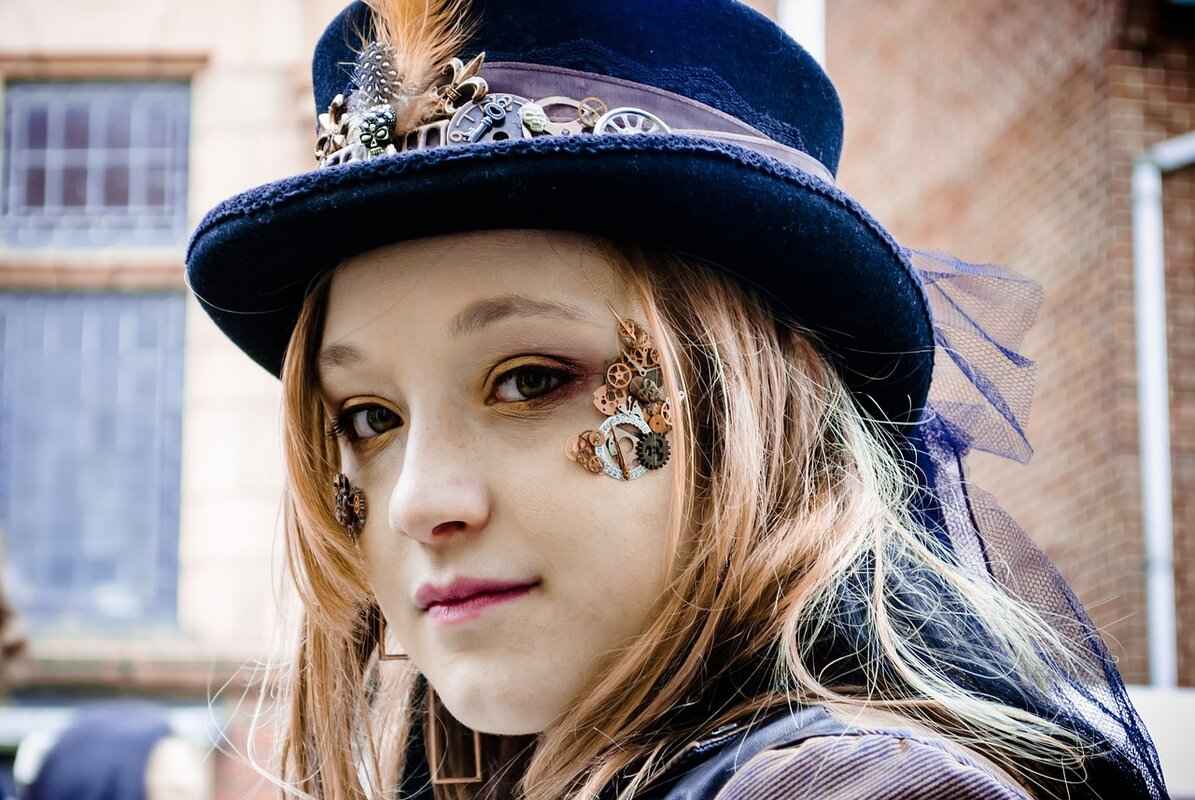
How to Choose the Right Mooncake?
When it comes to the Mooncake Festival, selecting the right mooncake can indeed be a daunting task due to the plethora of options available. Understanding the different types of mooncakes and their ingredients is essential for making an informed choice that aligns with your taste preferences and dietary restrictions.
Mooncakes can be broadly categorized into several types, each offering unique textures and flavors:
- Baked Mooncakes: These are the traditional mooncakes with a rich, dense pastry skin, often filled with lotus seed paste or red bean paste. They are typically enjoyed with tea.
- Snowskin Mooncakes: A modern twist, these mooncakes have a soft, chewy skin made from glutinous rice flour and are usually served chilled. They often feature creative fillings like fruit or ice cream.
- Teochew Mooncakes: Originating from the Teochew region, these mooncakes are characterized by their flaky, layered crust and are often filled with a savory mix of mung bean paste and salted egg yolk.
- Mini Mooncakes: Smaller in size, these mooncakes are perfect for those who want to sample a variety of flavors without committing to a full-sized treat.
When choosing mooncakes, pay close attention to the quality of ingredients. Here are some key components to consider:
- Natural Fillings: Look for mooncakes made with natural lotus seed paste, red bean paste, or high-quality nuts. Avoid those with artificial flavors or preservatives.
- Premium Nuts: Ingredients like macadamia nuts, walnuts, or pistachios can elevate the flavor and texture of mooncakes.
- Healthier Options: Some mooncakes now feature reduced sugar content or alternative sweeteners, catering to health-conscious consumers.
Understanding your personal taste can help you select the perfect mooncake:
- Sweet vs. Savory: If you have a sweet tooth, opt for traditional lotus seed or red bean mooncakes. For a savory experience, consider Teochew mooncakes or those with mixed nuts.
- Texture Preferences: If you enjoy chewy textures, snowskin mooncakes might be your best bet. On the other hand, if you prefer a firmer bite, go for baked mooncakes.
- Flavor Exploration: Don’t hesitate to try innovative flavors like durian, chocolate, or matcha to broaden your palate.
For the best mooncake selections, consider purchasing from reputable bakeries or specialty shops known for their quality:
- Local Bakeries: Many bakeries offer seasonal mooncakes, often using traditional recipes passed down through generations.
- Online Retailers: Numerous online platforms now sell mooncakes, providing reviews and detailed descriptions to help you choose.
- Festivals and Fairs: Attending Mooncake Festival events can provide opportunities to sample and purchase authentic mooncakes from various vendors.
By understanding the different types of mooncakes and their ingredients, you can make a more informed choice that enhances your Mooncake Festival experience. Whether you prefer traditional flavors or modern interpretations, there’s a mooncake out there to suit every palate.
Understanding Mooncake Types
The Mooncake Festival is a time of joy and celebration, and at the heart of this festival are the mooncakes. Understanding the different types of mooncakes can enhance your appreciation for this traditional delicacy. Let’s delve into the various types of mooncakes, each with its unique characteristics and flavors.
Mooncakes can be broadly categorized into several types, each offering a distinct experience:
- Baked Mooncakes: These are the most traditional type of mooncakes, characterized by their golden-brown crust. They are typically filled with rich pastes, such as lotus seed or red bean, and often have salted egg yolks for added flavor. The baking process gives them a firm texture and a slightly crispy exterior.
- Snowskin Mooncakes: A modern twist on the classic, snowskin mooncakes are made with a glutinous rice flour skin that is not baked but rather chilled. This results in a soft, chewy texture. They are often filled with innovative flavors like fruit purees or chocolate, making them a popular choice among younger generations.
- Teochew Mooncakes: Originating from the Teochew region, these mooncakes are known for their flaky, layered crust. They are typically filled with a mix of mung bean paste and pork lard, giving them a savory profile that contrasts with the sweetness of other mooncake varieties.
- Ice Cream Mooncakes: A contemporary favorite, these mooncakes feature ice cream fillings encased in a snowskin or traditional crust. They come in various flavors, from classic vanilla to exotic matcha, providing a refreshing twist perfect for warm weather.
The texture of mooncakes can significantly affect the overall tasting experience:
- Baked Mooncakes: With their firm and slightly crunchy exterior, they offer a satisfying bite, complemented by the smoothness of the filling.
- Snowskin Mooncakes: The soft and chewy texture of snowskin mooncakes makes them a delightful treat, providing a contrast to the creamy fillings.
- Teochew Mooncakes: Their flaky layers create a unique mouthfeel, making each bite a wonderful combination of crunch and softness.
Mooncakes are not just about texture; they also come in a variety of flavors:
- Traditional Flavors: Lotus seed paste and red bean paste are classic fillings that remain popular.
- Innovative Flavors: Modern mooncakes feature unique fillings like green tea, chocolate, and even durian, catering to adventurous palates.
- Health-Conscious Options: With growing health awareness, many bakeries now offer low-sugar or vegan mooncakes, ensuring everyone can enjoy this festive treat.
Selecting the perfect mooncake can be a delightful challenge. Here are some tips:
- Consider Your Preferences: Think about whether you prefer sweet or savory flavors, and choose accordingly.
- Check the Ingredients: Look for high-quality ingredients, as this can make a significant difference in taste.
- Explore Local Variations: Different regions may offer unique flavors and styles, so don’t hesitate to try something new!
In conclusion, understanding the types of mooncakes available can greatly enhance your experience during the Mooncake Festival. Whether you are drawn to the traditional baked varieties or the innovative snowskin options, there is a mooncake for everyone to enjoy!
Ingredients to Look For
Choosing the right mooncake is an essential part of the Mid-Autumn Festival experience. With a plethora of options available, understanding the quality of ingredients is crucial. The ingredients not only determine the flavor but also the overall experience of enjoying these traditional pastries.
The ingredients in mooncakes play a significant role in defining their taste, texture, and nutritional value. High-quality ingredients can elevate a mooncake from ordinary to extraordinary, enhancing the festive experience. When selecting mooncakes, consider the following:
Lotus seed paste is a traditional filling that is beloved for its smooth texture and subtle sweetness. Made from carefully selected lotus seeds, this paste is often combined with sugar and a hint of oil to create a rich, velvety filling. The quality of the lotus seeds greatly influences the taste; look for mooncakes that use natural lotus seed paste rather than artificial substitutes.
Many mooncakes incorporate a variety of nuts, such as walnuts, almonds, and macadamias. These ingredients not only add a delightful crunch but also contribute to the overall flavor profile. Premium nuts are often roasted to enhance their flavor, making them a perfect complement to the sweetness of the lotus paste. When purchasing mooncakes, check for those that highlight the use of high-quality nuts.
While traditional fillings like lotus seed paste are timeless, many modern bakers are experimenting with innovative flavors. Ingredients such as green tea, durian, and chocolate are gaining popularity. These unique fillings can offer a refreshing twist on the classic mooncake, appealing to a broader audience. When choosing mooncakes, consider trying those with innovative fillings for a new taste experience.
With the growing trend towards healthier eating, many mooncake makers are opting for natural sweeteners like honey or agave syrup instead of refined sugar. These alternatives can provide a more wholesome taste and lower the glycemic index of the mooncakes. If you’re health-conscious, look for mooncakes that advertise the use of natural sweeteners.
- Artificial Fillings: Steer clear of mooncakes that use artificial flavors or preservatives, as these can detract from the authentic taste.
- Low-Quality Ingredients: Avoid options that do not specify the quality of their ingredients, as this can often indicate lower standards.
- Overly Sugary Varieties: Mooncakes should be sweet but not overwhelmingly so. Be cautious of those that list excessive sugar in their ingredients.
In conclusion, choosing the right mooncake involves more than just picking a pretty box. By paying attention to the quality of ingredients—such as natural lotus seed paste, premium nuts, and innovative fillings—you can ensure a delightful experience during the Mooncake Festival. Whether you prefer traditional flavors or are open to modern twists, understanding what goes into your mooncake will enhance your appreciation for this cultural delicacy.
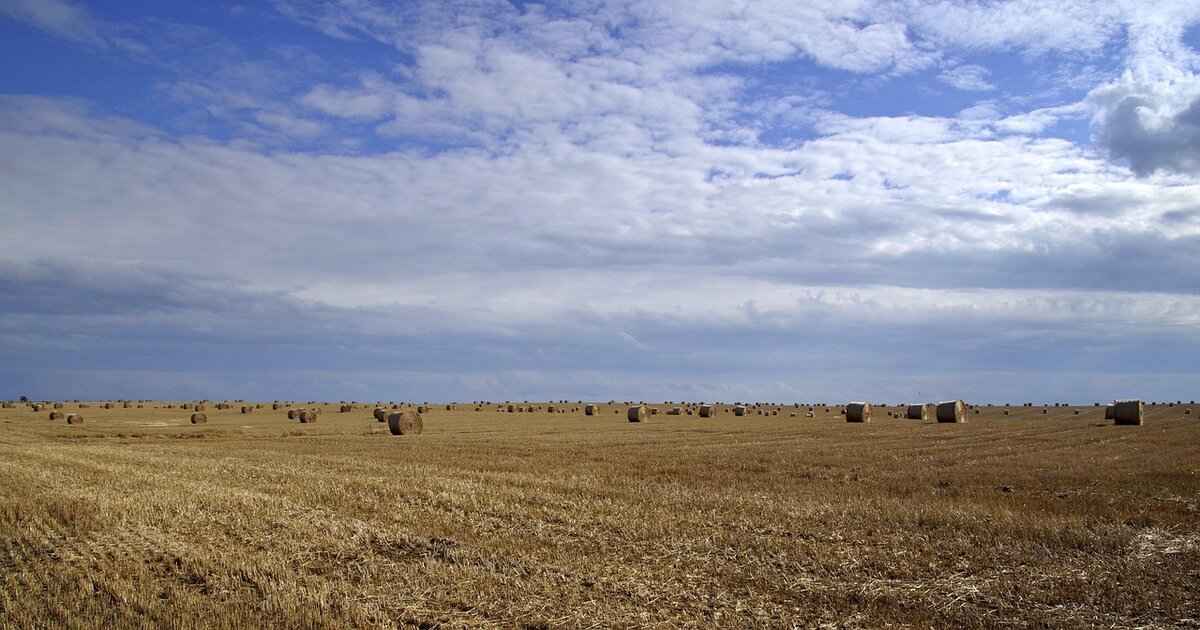
How to Celebrate the Mooncake Festival?
The Mooncake Festival, also known as the Mid-Autumn Festival, is a time of joy and togetherness, celebrated with various traditions that bring families and communities closer. Celebrating the Mooncake Festival involves an array of vibrant customs, each contributing to the festive atmosphere that characterizes this special occasion. Below are some of the most cherished ways to celebrate this cultural event.
One of the most significant aspects of the Mooncake Festival is the family reunion. Families come together to share meals, enjoy each other’s company, and partake in the age-old tradition of mooncake sharing. This act of sharing symbolizes unity and togetherness, reinforcing the bonds between family members. Traditional dishes such as roast duck, sticky rice, and, of course, mooncakes are often served during these gatherings, creating a feast that everyone looks forward to.
Another delightful tradition is the lantern display. Colorful lanterns of various shapes and sizes light up the night sky, creating a magical atmosphere. Children often participate by carrying their own lanterns while walking in parks or participating in community events. Some families even organize lantern-making workshops, allowing everyone to express their creativity while honoring this beautiful tradition.
As the moon reaches its fullest and brightest during the festival, moon-gazing becomes a cherished activity. Families often gather outdoors, perhaps in gardens or parks, to admire the beauty of the moon. This practice is not just about enjoying the view; it is also a moment for reflection and appreciation of nature’s wonders. Many families share stories and legends associated with the moon, enhancing the cultural experience.
- Making Lanterns: Crafting lanterns is a fun activity that engages both children and adults. Families often come together to create unique designs, adding personal touches to their lanterns.
- Performing Dragon Dances: In many communities, dragon dances are performed to celebrate the festival. These performances are vibrant and energetic, showcasing the rich cultural heritage.
- Moon-Viewing Parties: Hosting moon-viewing parties allows families and friends to gather, share mooncakes, and enjoy the beauty of the night sky together.
In recent years, modern celebrations have emerged, incorporating contemporary elements into traditional festivities. Cities often host mooncake fairs and cultural performances, attracting diverse audiences. These events blend traditional customs with modern entertainment, ensuring that the spirit of the Mooncake Festival remains vibrant and relevant.
Decorating homes with festive items is another way to celebrate. Many families adorn their homes with traditional decorations such as paper cuttings, lanterns, and floral arrangements. These decorations not only beautify the living space but also signify the importance of the festival and the joy it brings.
Overall, celebrating the Mooncake Festival is a rich tapestry of traditions that bring families and communities together. From sharing mooncakes to engaging in cultural activities, each custom plays a vital role in honoring this cherished occasion. The festival serves as a reminder of the importance of unity, appreciation for nature, and the joy of togetherness.
Traditional Activities During the Festival
The Mooncake Festival, also known as the Mid-Autumn Festival, is a time for family reunions and cultural celebrations across Asia. Among the various traditions that make this festival special, activities such as making lanterns, performing dragon dances, and participating in moon-viewing parties stand out. These activities not only enhance the communal spirit but also foster a deeper appreciation for cultural heritage.
During the Mooncake Festival, families and communities engage in a variety of activities that are both fun and meaningful. One of the most cherished traditions is lantern making. Children and adults alike enjoy crafting colorful lanterns, often shaped like animals or mythical creatures. These lanterns are not merely decorative; they symbolize the hope for a bright future and are often displayed during evening gatherings.
- Lantern Displays: As night falls, the sky becomes a canvas of glowing lanterns, illuminating parks and streets. This visual spectacle creates a magical atmosphere that brings communities together.
- Dragon Dances: Another highlight of the festival is the dragon dance. Performed by skilled dancers, this traditional dance symbolizes strength and good fortune. The vibrant colors and rhythmic movements captivate audiences, making it a must-see event.
- Moon-Viewing Parties: Families gather to admire the full moon, which is believed to be the brightest and roundest during this time. Sharing mooncakes while enjoying the moonlight fosters a sense of unity and gratitude.
Participating in traditional activities during the Mooncake Festival allows individuals to connect with their cultural roots. Making lanterns not only nurtures creativity but also serves as a reminder of the importance of family and community bonds. Through the act of crafting, participants learn about the symbolism behind the lanterns, deepening their understanding of the festival’s significance.
The dragon dance is not just a performance; it is a cultural expression that has been passed down through generations. By witnessing this dance, younger generations gain insight into their heritage, fostering a sense of pride and continuity. The vibrant costumes and lively music create an engaging environment that encourages participation and appreciation for cultural diversity.
Moreover, moon-viewing parties provide an opportunity for families to come together, share stories, and reflect on their blessings. This practice reinforces the values of gratitude and unity, essential components of the festival. As families gather under the moonlight, they create lasting memories that strengthen their bonds.
While traditional activities remain at the heart of the Mooncake Festival, many cities are incorporating modern elements to attract a broader audience. Lantern festivals now often feature interactive displays and light shows, captivating both young and old. These events blend tradition with innovation, making the festival more accessible and enjoyable for everyone.
Additionally, dragon dance competitions have become popular, showcasing the skills of various teams. This competitive aspect adds excitement and encourages community participation, as teams often represent different neighborhoods or organizations.
Moon-viewing parties have also evolved, with many cities organizing public events that include live music, food stalls, and cultural performances. These gatherings not only celebrate the festival but also promote cultural exchange, allowing people from different backgrounds to appreciate the rich traditions associated with the Mooncake Festival.
In summary, the activities surrounding the Mooncake Festival, such as making lanterns, performing dragon dances, and participating in moon-viewing parties, play a vital role in enhancing cultural appreciation and fostering community spirit. By embracing both traditional and modern elements, the festival continues to thrive, ensuring that its rich heritage is celebrated for generations to come.
Modern Celebrations and Events
The Mooncake Festival, celebrated during the Mid-Autumn season, has transformed over the years, integrating both traditional customs and modern entertainment. This evolution is particularly evident in the various contemporary events held across cities in Asia, which not only honor the festival’s rich heritage but also attract a diverse audience.
Modern celebrations during the Mooncake Festival have expanded beyond the traditional family gatherings and moon-gazing. Cities like Hong Kong, Singapore, and Taipei are now known for hosting vibrant mooncake fairs, cultural performances, and artistic displays that engage both locals and tourists alike.
Many cities creatively blend traditional customs with contemporary entertainment, making the festival appealing to younger generations. For instance, mooncake fairs often feature not only the traditional pastries but also innovative flavors and designs that reflect modern culinary trends. Street performances, art installations, and live music create a festive atmosphere, allowing attendees to immerse themselves in both cultural appreciation and modern fun.
- Mooncake Tasting Events: These events allow visitors to sample a wide variety of mooncakes, from classic flavors to innovative ones like matcha or chocolate.
- Cultural Performances: Traditional dances, music performances, and theatrical shows often take place, showcasing the cultural heritage associated with the festival.
- Art Exhibitions: Many cities feature art installations that celebrate the themes of the Mooncake Festival, such as unity and family.
- Lantern Displays: Colorful lanterns light up public spaces, creating a magical ambiance for families to enjoy.
These modern celebrations play a crucial role in fostering community spirit and cultural understanding. They provide a platform for people of all backgrounds to come together and celebrate, thus enhancing the festival’s significance. By merging traditional elements with modern entertainment, cities are able to create an inclusive environment that resonates with a broader audience.
The integration of contemporary events into the Mooncake Festival has significantly boosted tourism in many cities. Visitors are drawn not only by the delicious mooncakes but also by the vibrant atmosphere and unique experiences offered during the festival. This influx of tourists contributes to the local economy and promotes cultural exchange, making the festival a win-win for both residents and visitors.
If you’re looking to participate in the Mooncake Festival festivities, consider attending local fairs and events in your area. Engage in activities such as:
- Sampling different mooncake flavors.
- Participating in lantern-making workshops.
- Enjoying live performances and cultural exhibitions.
- Joining community gatherings for moon-gazing.
The Mooncake Festival, with its rich history and evolving modern celebrations, offers something for everyone. Whether you enjoy the traditional aspects or the contemporary events, the festival is an excellent opportunity to connect with culture, community, and delicious food.
Frequently Asked Questions
- What is the significance of mooncakes during the Mooncake Festival?
Mooncakes symbolize unity and family togetherness, making them a vital part of the Mid-Autumn Festival celebrations. They represent the harvest season and are shared among loved ones, reinforcing bonds and traditions.
- What are the different types of mooncakes available?
Mooncakes come in various types, including baked, snowskin, and Teochew styles. Each type has its unique texture and flavor profile, catering to different tastes and preferences, making the selection process exciting!
- Where can I find the best mooncakes in Asia?
Renowned cities like Hong Kong, Singapore, and Taipei are famous for their exceptional mooncake offerings. These places boast both traditional and innovative flavors that can elevate your festival experience!
- How do I choose the right mooncake?
Selecting the perfect mooncake can be a delightful challenge! Look for high-quality ingredients like natural lotus seed paste or premium nuts, as they significantly enhance the taste and overall enjoyment of the treat.
- What activities are typically involved in celebrating the Mooncake Festival?
Celebrations often include family gatherings, lantern displays, and moon-gazing. Traditional activities like making lanterns and dragon dances bring communities together, while modern events add a fresh twist to the festivities!


